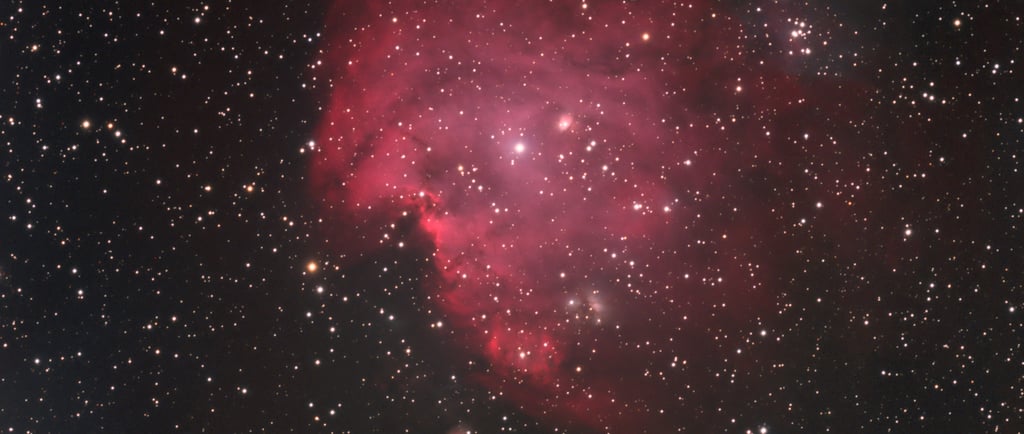NGC 2174: The Monkey Head Nebula


Introduction to the Monkey Head Nebula
Located approximately 6,400 light years away from Earth, NGC 2174, more commonly known as the Monkey Head Nebula, represents a fascinating region of stellar birth. This celestial formation is distinguished by its intricate collection of carved knots of gas and dust, which collectively stimulate new star formation within its bounds. In this blog post, we will explore this magnificent nebula, its characteristics, and its significance in the universe.
Characteristics of NGC 2174
The Monkey Head Nebula is a bright emission nebula residing in the constellation of Orion. It is composed of various gases—including hydrogen and helium—that have been ionized by the intense radiation emitted from nearby hot stars. These stars, barely birthed from the cosmic womb of NGC 2174, illuminate the region with their brilliant light, revealing the intricate structure of the gas and dust knots that make the nebula visually striking. The overall dimensions of this nebula stretch across several light years, presenting a breathtaking view to both amateur and professional astronomers surveyed through powerful telescopes.
The Astrophysical Significance of Stellar Nurseries
Regions like NGC 2174 are of paramount importance in astrophysics as they serve as natural laboratories for studying the processes of star formation. The carved knots of gas and dust act as incubators for stars, providing the necessary materials and conditions for the birth of new celestial bodies. Observations of such stellar nurseries enable scientists to unravel the complex dynamics of cosmic gas, understand star life cycles, and explore how these processes contribute to the formation of galaxies.
Moreover, studying NGC 2174 in detail reveals the effects of radiation pressure from massive stars on the surrounding material, which can affect the gravitational collapse of gas clouds, ultimately leading to star formation. These interactions exemplify the delicate balance between the forces of gravity and radiation that dictate stellar evolution.
Future Research
As we continue to delve deeper into the study of regions like NGC 2174, new technologies and observational techniques promise to unlock further secrets of stellar formation and evolution. With advancements in space telescopes and imaging equipment, researchers are poised to gain further insights into the early stages of star birth and the role such nebulae play in shaping the cosmos.
In summary, NGC 2174, known as the Monkey Head Nebula, captivates astronomers and enthusiasts alike with its extraordinary beauty and profound significance in the field of astrophysics. By continuing to observe and study this stellar nursery, we not only enhance our understanding of star formation but also appreciate the grandeur of the universe where our own solar system resides.
